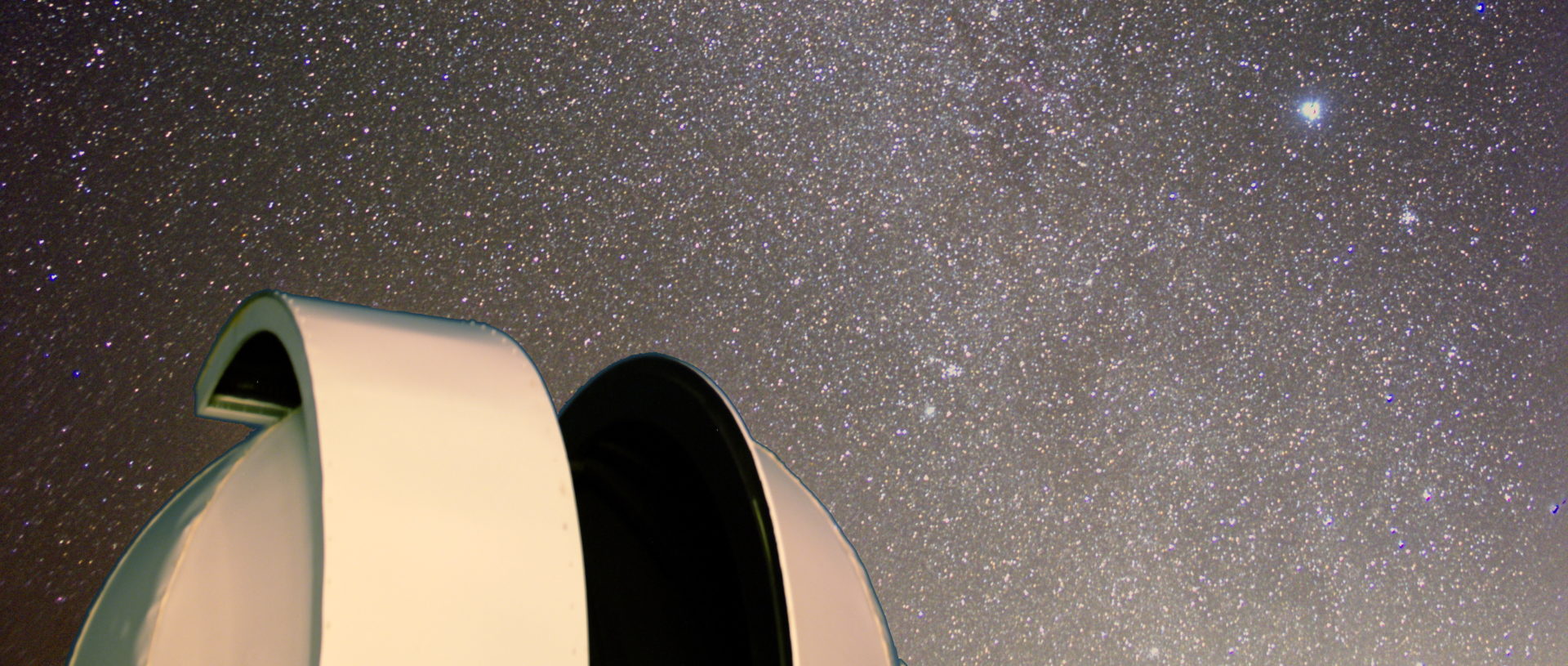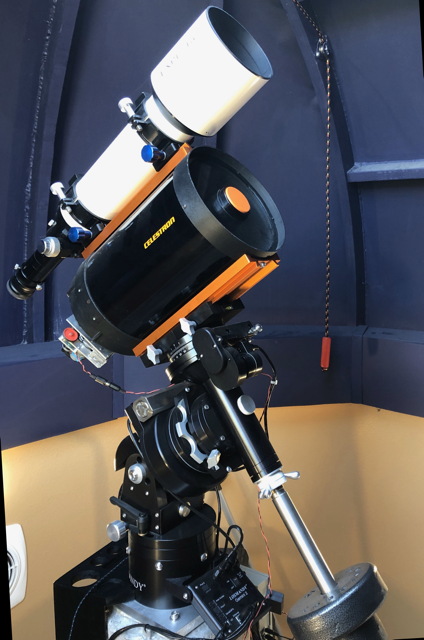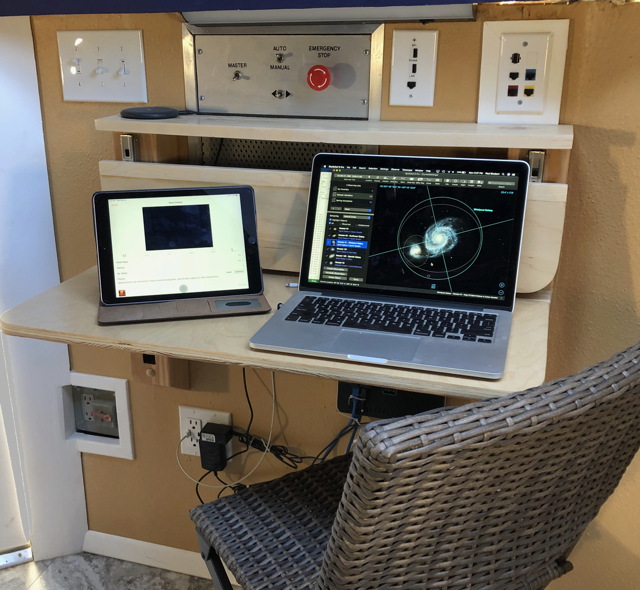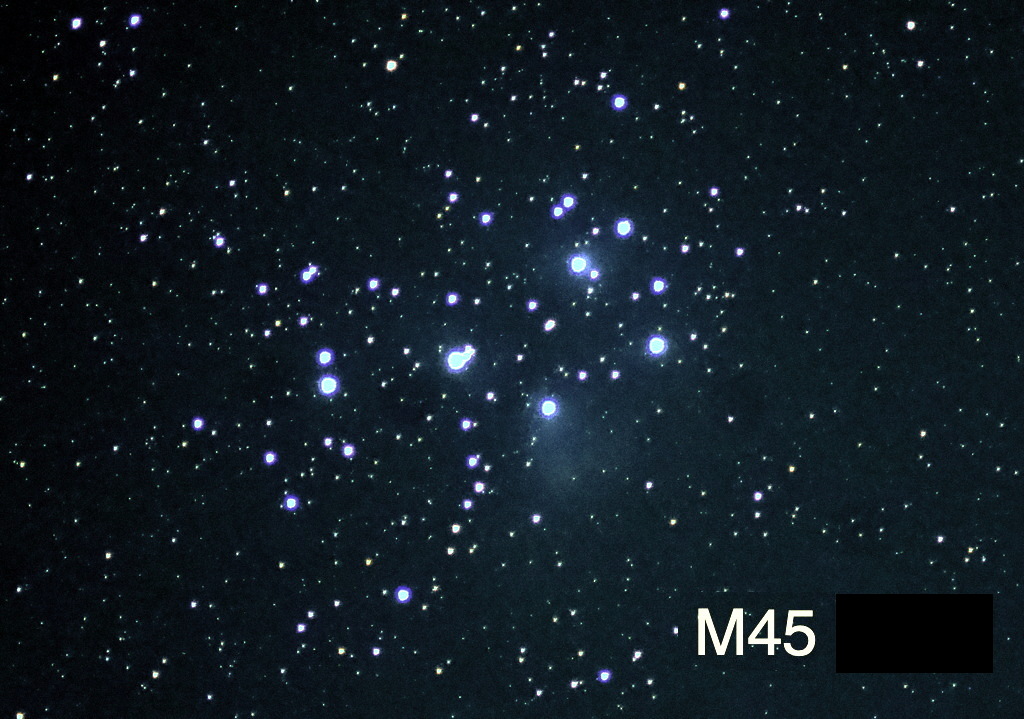Messier Marathon 2020
With Hawksnest Observatory going operational at the beginning of the year, I identified the 2020 Messier Marathon window as a great opportunity to put the observatory through its paces. 2020 was looking like a good year – new moon was pretty much in the window, and there would be two weekends with good prospects for being able to see all 110 objects in the Messier catalogue. Since astrophotography was a primary motivation for building the observatory, I set a goal to image all 110 objects in a single night. Unfortunately, the weather here in New Mexico had been pretty miserable in late March, but a brief clear spell came along in the middle of the week.
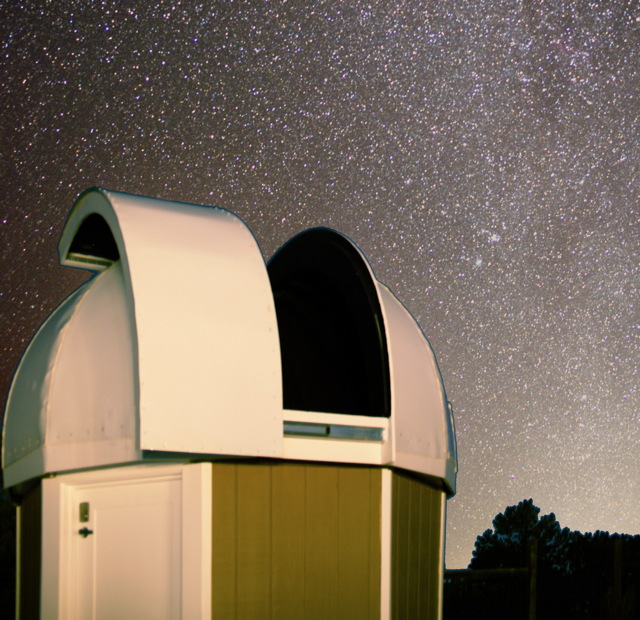
The observatory equipment consists of a 102mm APO refractor and a Celestron 8″ SCT, mounted on a Losmandy G11-GT Mount. (A little overkill, but there are plans to eventually upgrade to a C14.) The camera was a Sony Alpha-6000 Mirrorless APS-C, modified with a LifePixel H-Alpha filter. In addition to the telescopes, a Canon FD 200mm f/4 telephoto was used for some of the very wide field objects, like the Pleiades, Beehive Cluster, and Omega Nebula-Sagittarius Star Cloud grouping.
The only hope to image all of the Messier objects lay in excellent planning and efficient control of both the telescope and camera. A quick calculation of dawn-to-dusk time gives an average of 5 minutes per object to slew, center, expose, and dark frame calibrate. Getting that down to about 3 1/2 minutes per object gives time for a couple of breaks and a 1 AM to 4 AM nap waiting for the morning objects to rise. The telescope was controlled using a Mac running SkySafari Pro, and the camera was controlled over WiFi, tethered to an iPad running “Shutter.” This pretty much let me control operations from the observing desk in the observatory, although there was plenty of up-and-down, switching the camera from one telescope to the other to optimize the field of view to the particular object.
I downloaded the “Messier Marathon” observing list from the SkySafari site, and pretty much followed its order. A quick note here – there were some errors in the downloaded list that I had to correct. Not sure whether these were inadvertent or intentional, but caveat emptor if you plan going this route, and check the list for yourself. I did re-order the list in the morning session to minimize telescope changes. I probably should have done this in the evening as well, and am planning on revising the list order if I attempt this again.
So, the “rules of the game” simply were to image as many Messier objects in a single 24-hour period as possible. The images were clearly not going to be great; I generally will take 20 to 30 minutes of integrated/stacked exposure on an object, but in this case I was limited to the 30 second maximum exposure of my Sony camera. This was pretty much a demonstration of what could be accomplished with readily available modern photo equipment. When looking through this page, keep in mind that all of the photos are single 30 second exposures taken on a single night.
Having done a bit of research on doing the Messier Marathon challenge, my plan was to run three evening sessions: “early setters” and the winter objects, the Leo-Ursa Major-Canes Venatici galaxies, and ending with the Virgo cluster. This would cover the sky by a little after midnight. Then a long break (nap) until around 4 AM waiting for the morning objects to rise, and the final morning session to dawn.
Session 1: Early Setters and the Winter Sky
The first observing session would focus on objects setting shortly after the sun, and the Messier objects generally associated with the winter sky. These include well-known objects such as the Orion nebula, Andromeda galaxy, and the Pleiades.
Set-up, of course, started early, around sunset; opening the observatory, booting everything up, getting the camera set up, and getting the dome, telescope, and Mac connected. I have a fairly good western horizon, but observing the early setting objects would be hindered by the Albuquerque “light dome” as well as twilight. As twilight faded it was time to run through the “early setters” – a couple of dim galaxies in Cetus, and then the large Pinwheel galaxy (M33), followed by the Andromeda galaxy (M31) and its two small satellite galaxies. At this point imaging was an advantage to direct visual observation, as the images could be processed to enhance contrast between these fairly dim objects and the sky background.
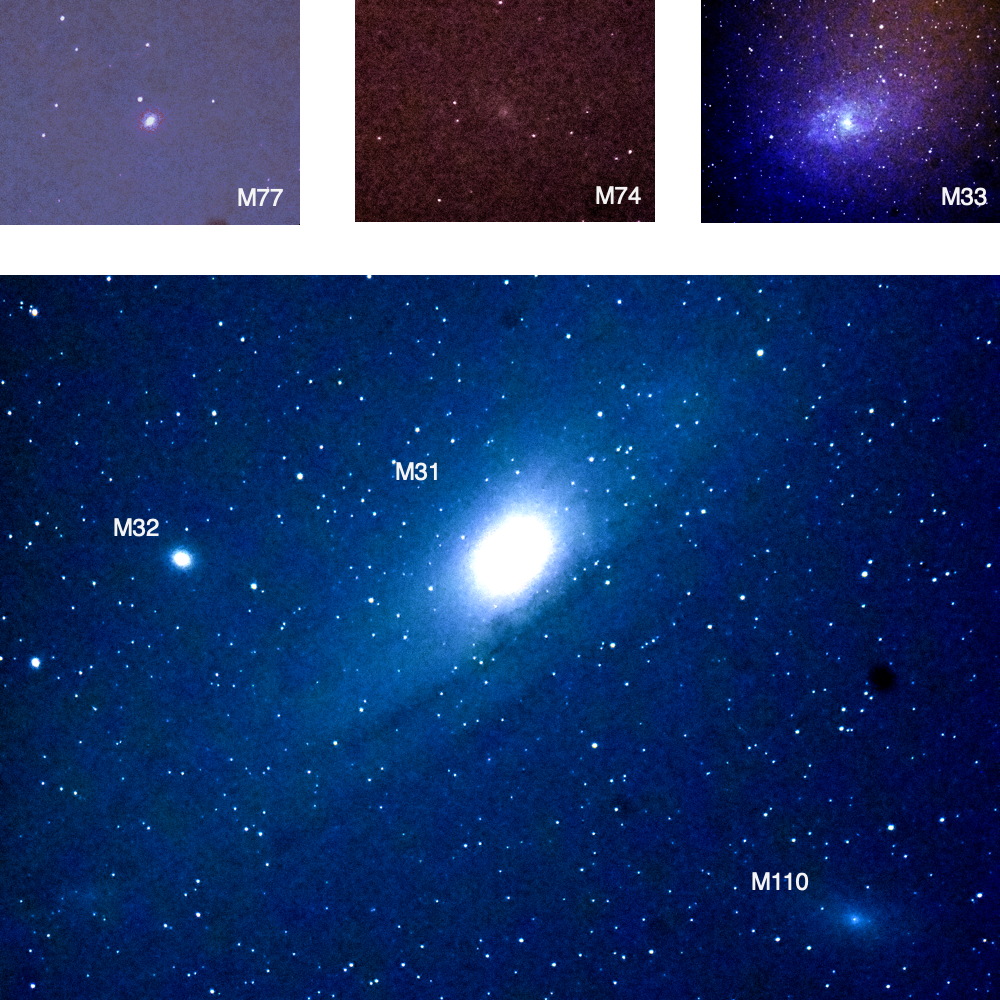
Working through the list would sequence through several photogenic objects, including the Orion nebula (M42-43), the “Little Dumbbell” (M76), and the faint reflection nebula M78. Also in the winter sky is the object that started Messier on his catalogue – M1, the Crab nebula.
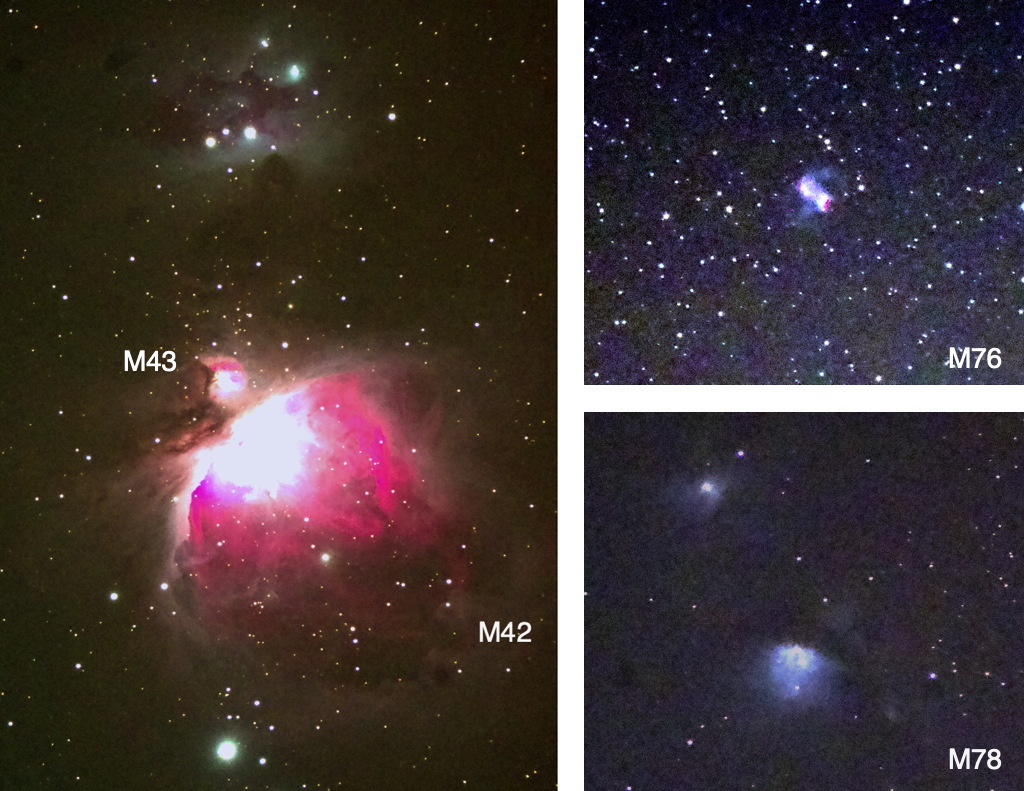
The well-known Pleiades (M45) is a bright, naked-eye example of an open cluster, and open clusters dominate the remaining Messier objects in the winter sky, although the globular cluster M79 does sneak in there. Running through the winter sky took about 2 hours of observing, so it was time for a quick break before starting on the next session.
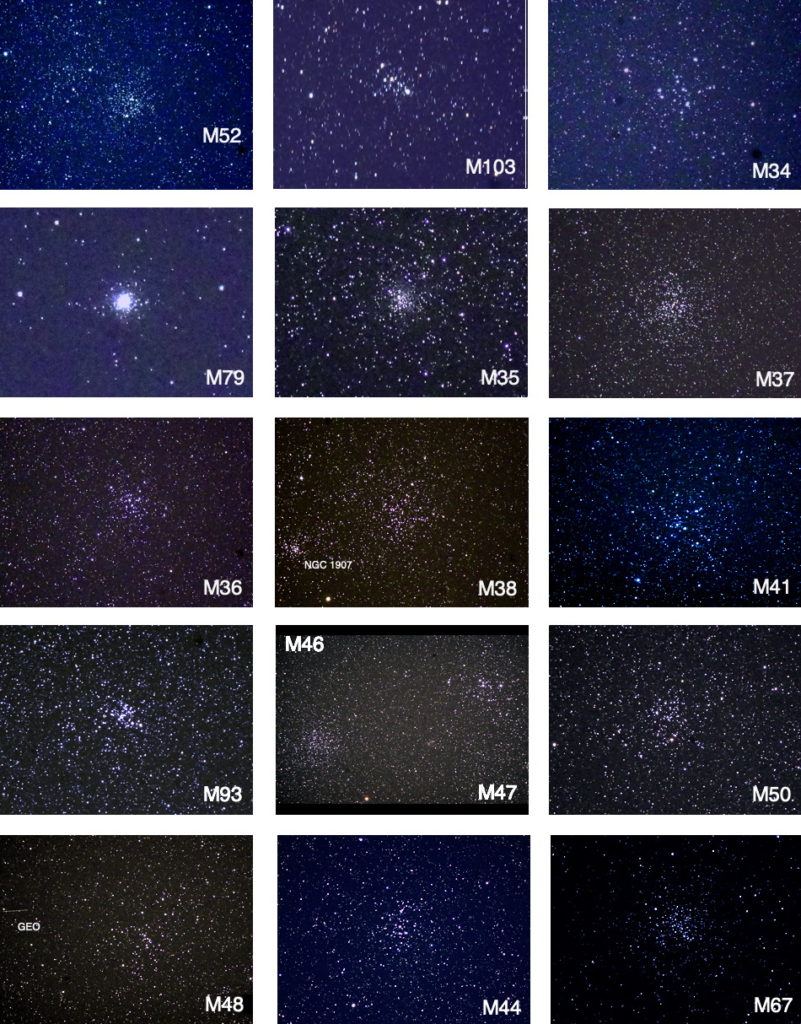
Session 2: Leo & Northern Galaxies
The second observing session worked through the galaxies in Leo and the northern sky constellations of Ursa Major and Canes Venatici. Some interesting and well-known objects in this session, including the galaxy pair M65 & M66, the Whirlpool galaxy (M51), the nice little Owl Nebula (M97) planetary, and a few other large galaxies.

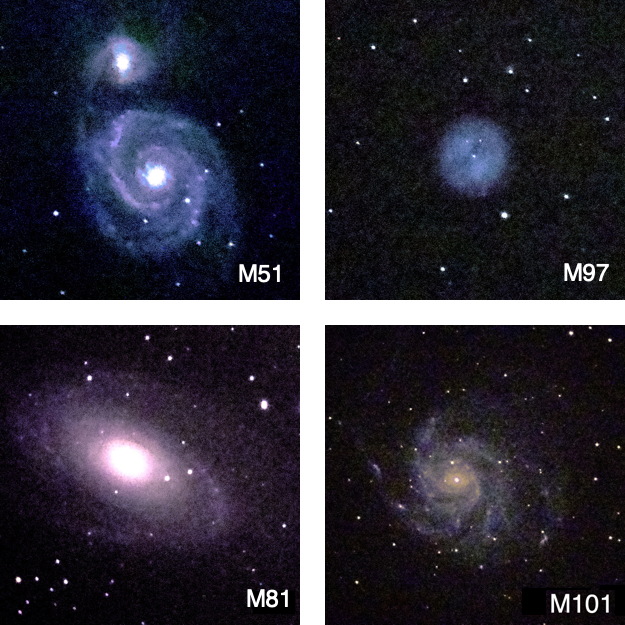
Again, mostly galaxies in this part of the sky; so many, in fact, that many of the images contain not only the target Messier object, but often several dimmer objects from the New General Catalog (NGC). In addition to the galaxies, this part of the sky also included a double star that somehow made it into the Messier catalog, M40, and an example of both open (M53) and globular (M3) star clusters.
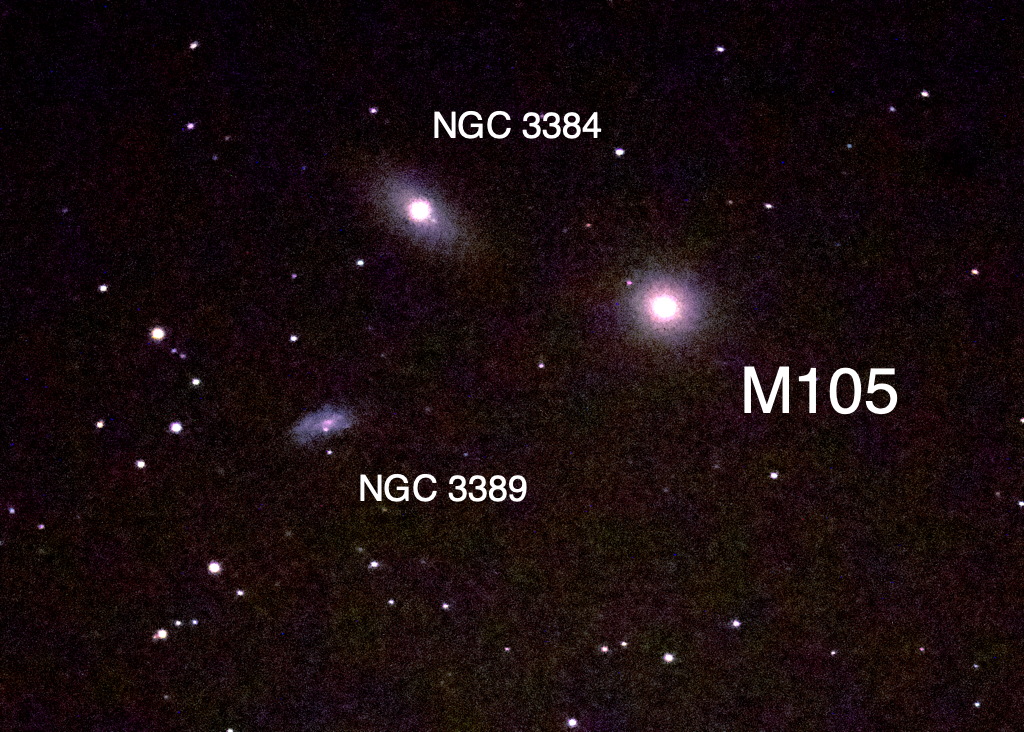

It took roughly 45 minutes to work through the second session, which went fairly efficiently due to the fact that all of the objects were fairly small, so there was no camera shift between the telescopes. Unfortunately, late in the session, I managed to mis-point when trying to image M64, an error I didn’t discover until after dawn, resulting in my first “missed” object in the marathon.
Session 3: The Virgo Cluster
The final evening session would work through the Virgo cluster of galaxies, and then pick up a few spring globulars. The start of the session was delayed when the WiFi network went down, and it took me roughly half an hour to figure out what was going on – why suddenly nothing was communicating with anything – and then re-boot the network.
The Highlights

The galaxies of the Virgo Cluster
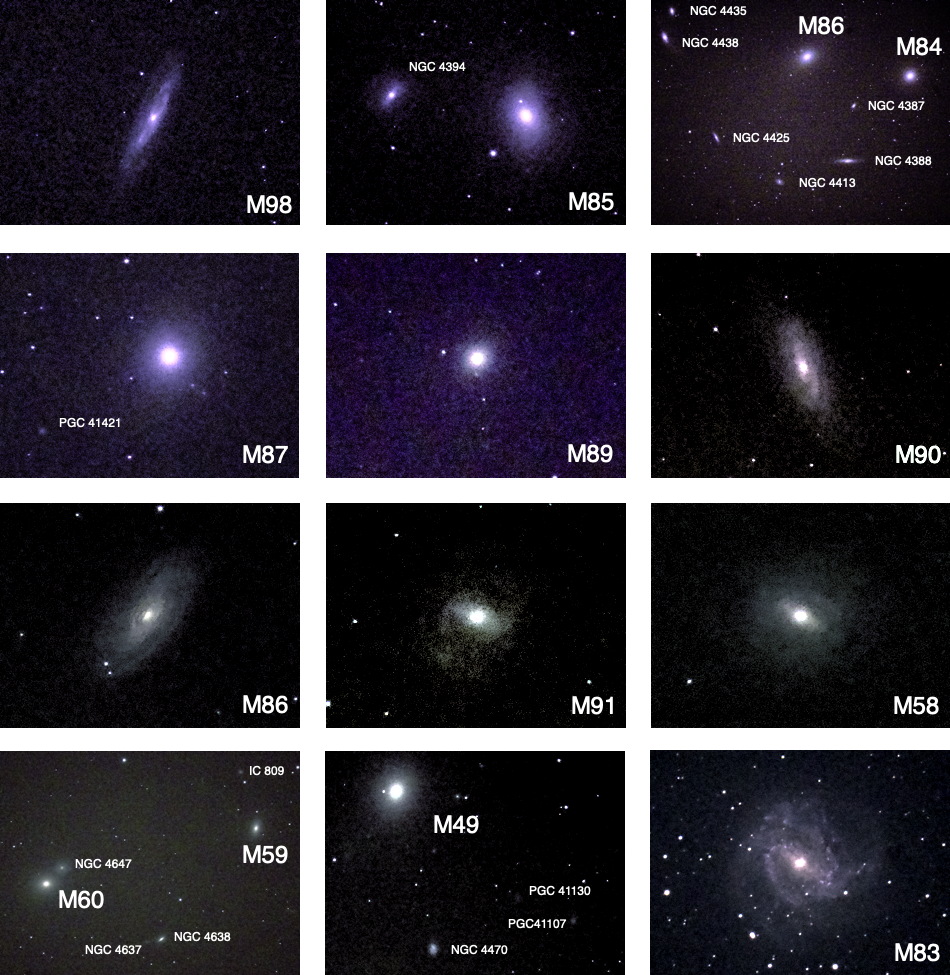
The Spring Globulars
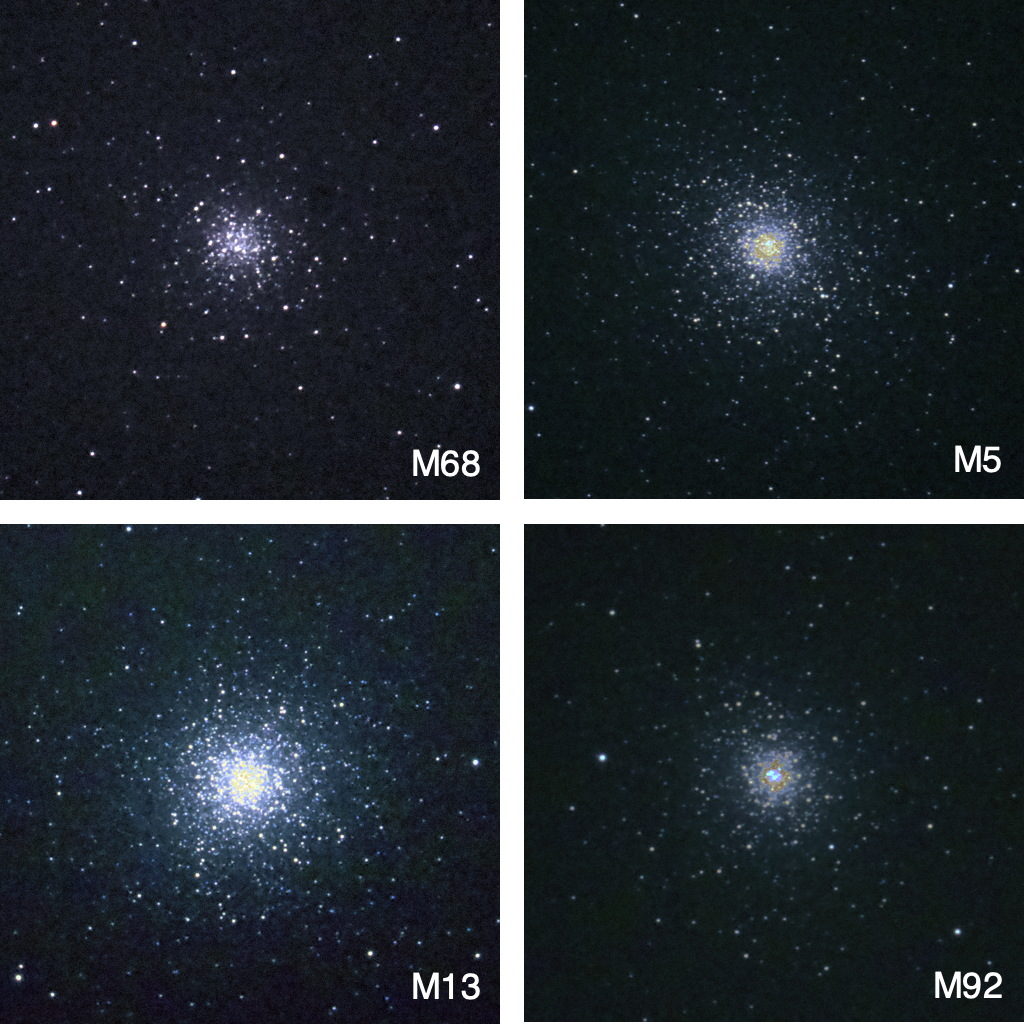
It only took about 45 minutes to work through the Virgo cluster, finishing at about 1 AM. Then it was off to bed after a little snack for a quick nap before the start of the morning session.
Session 4: Summer Milky Way
Up at 4 AM to finish off the marathon with the objects that rose after midnight, and catch the final objects rising before dawn. The morning session started with the Ring nebula, M57, a particular favorite of mine as it was “first light” for the telescope I built back in high school. The sequence continued with another nice little planetary, the Dumbbell nebula, M27, and then went down the summer Milky Way visiting a number of globular clusters on the way to the heart of the galaxy in Sagittarius.
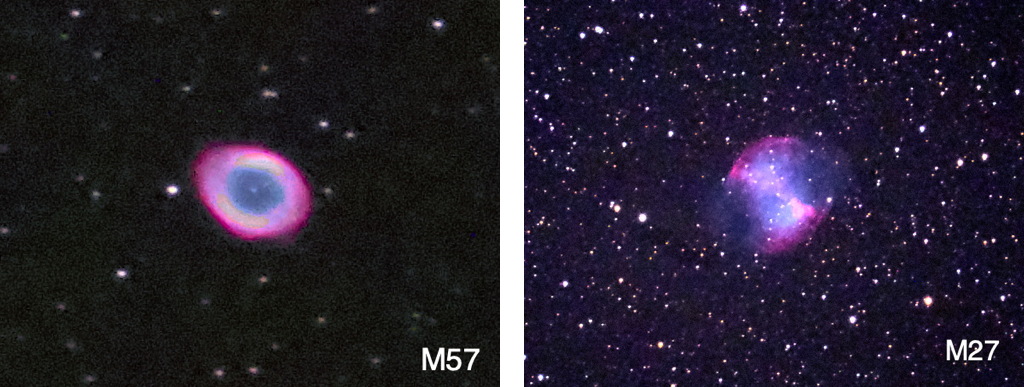
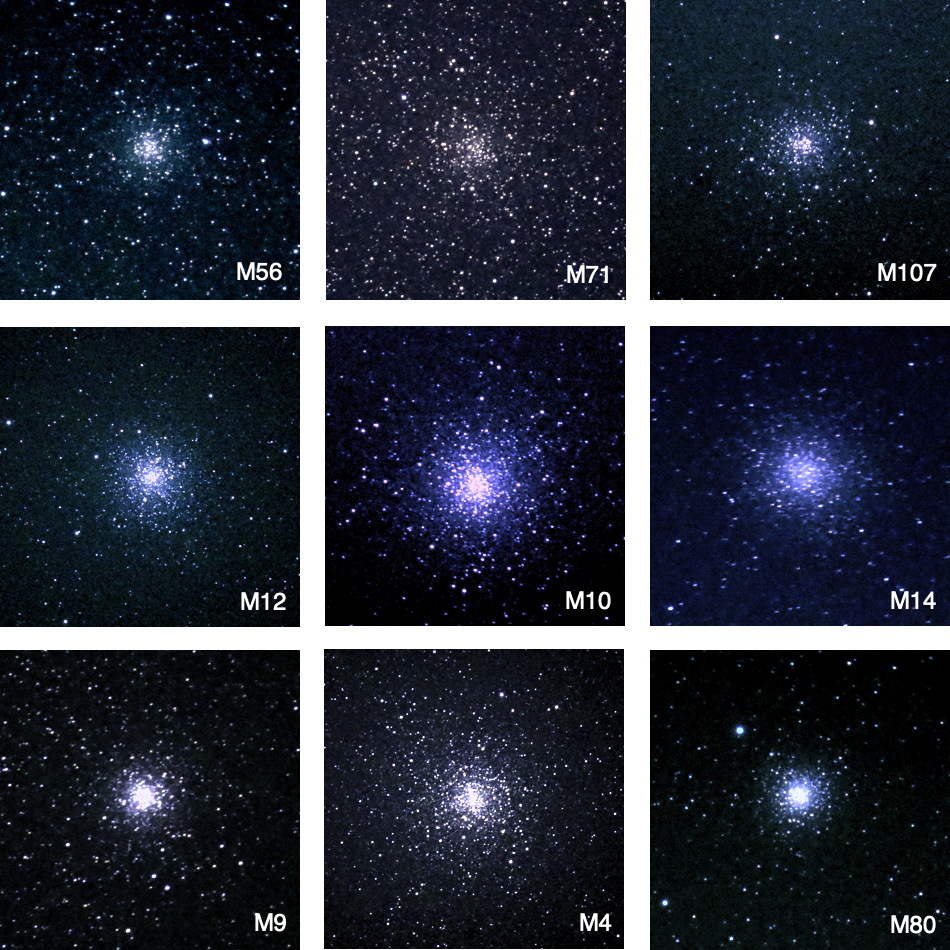
The heart of the galaxy
The wee hours of the morning would bring the center of the Milky Way into view, with several spectacular Messier objects
The Eagle Nebula
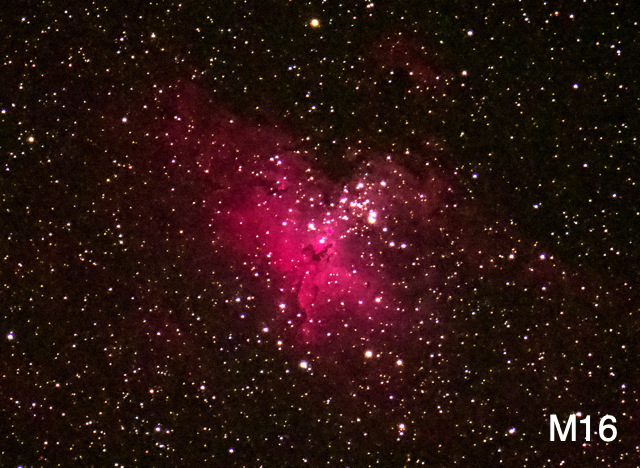
The Omega Nebula and Sagittarius Star Cloud
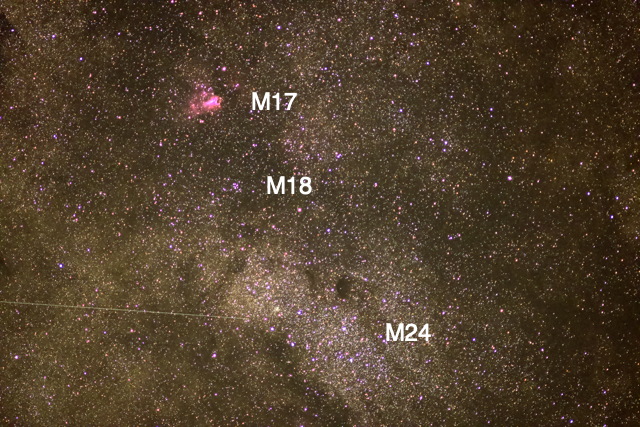
The Triffid Nebula
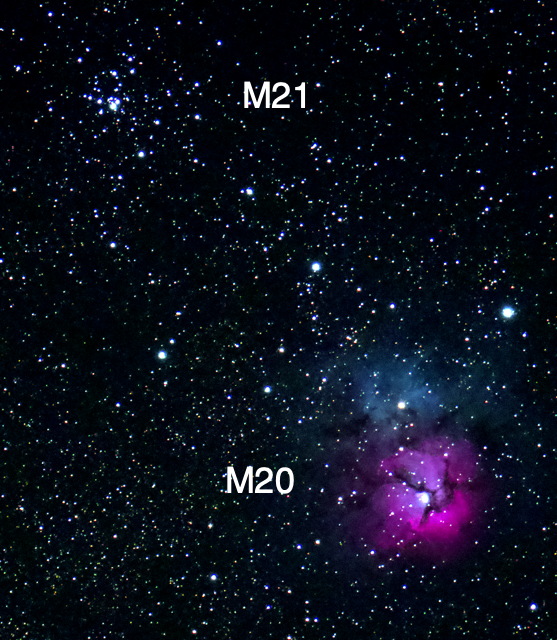
The Lagoon Nebula

Finishing the night
After running through the center of the Milky Way, it was time to continue with the remainder of the catalog, mainly a set of open and globular clusters.
The closing globulars

The closing open clusters
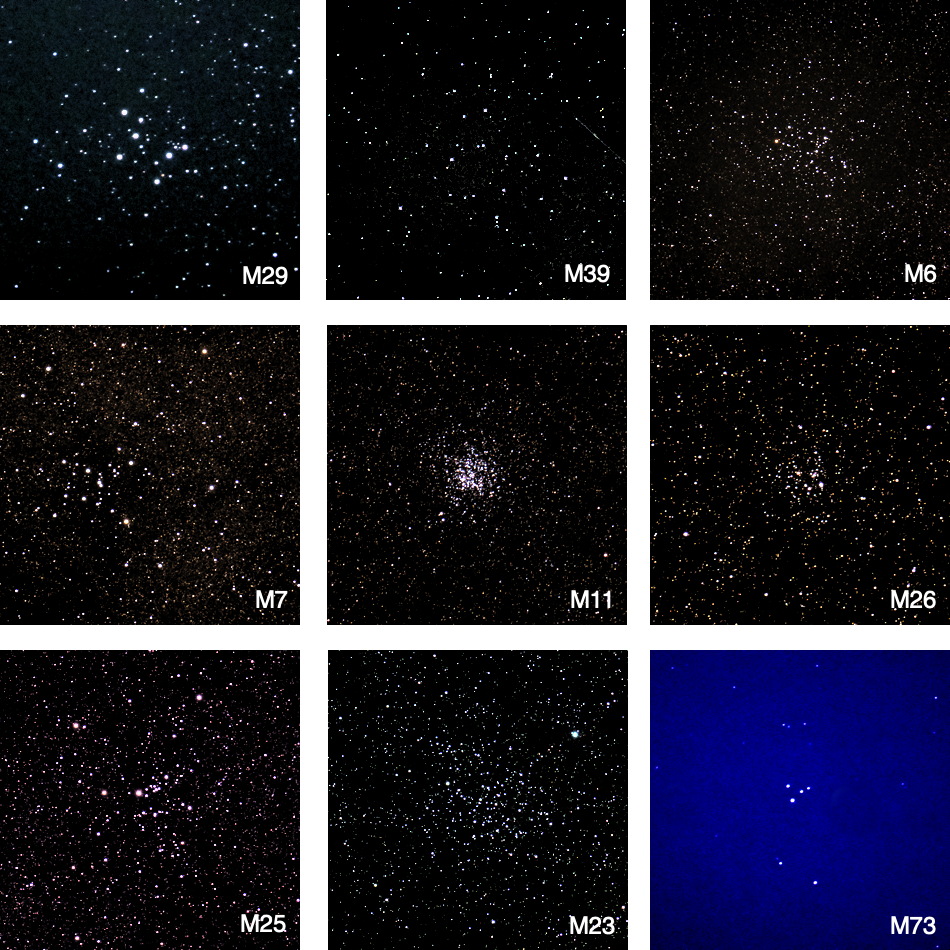
Things had been going smoothly for most of the night, except for the (at this point unnoticed) M64 miss. But clouds had started moving in from the West during the morning. Luckily, they had avoided the southeastern sky, where most of the morning Messier objects were located. I got down to the final five objects on the list, but attempting to point at M15 and its nearby companion M2 revealed that clouds had moved in low and to the northeast. So a full run wasn’t going to happen. It did appear that there was an opportunity to grab M72 and M73, a pair of star clusters in Aquarius, but the final object, M30, was always going to be very low, and was now also obscured by clouds along the horizon.
Final Score: 106 / 110
All-in-all, imaged enough objects to declare success with some room for improvement should I want to try this again. Weather was the biggest factor, although I had picked the best and likely only night in the window of opportunity. This had just been a cloudy March here in New Mexico. I also identified the need for more “real-time” looks at the images. Might try this again at some point. Definitely want to “run the table.”
